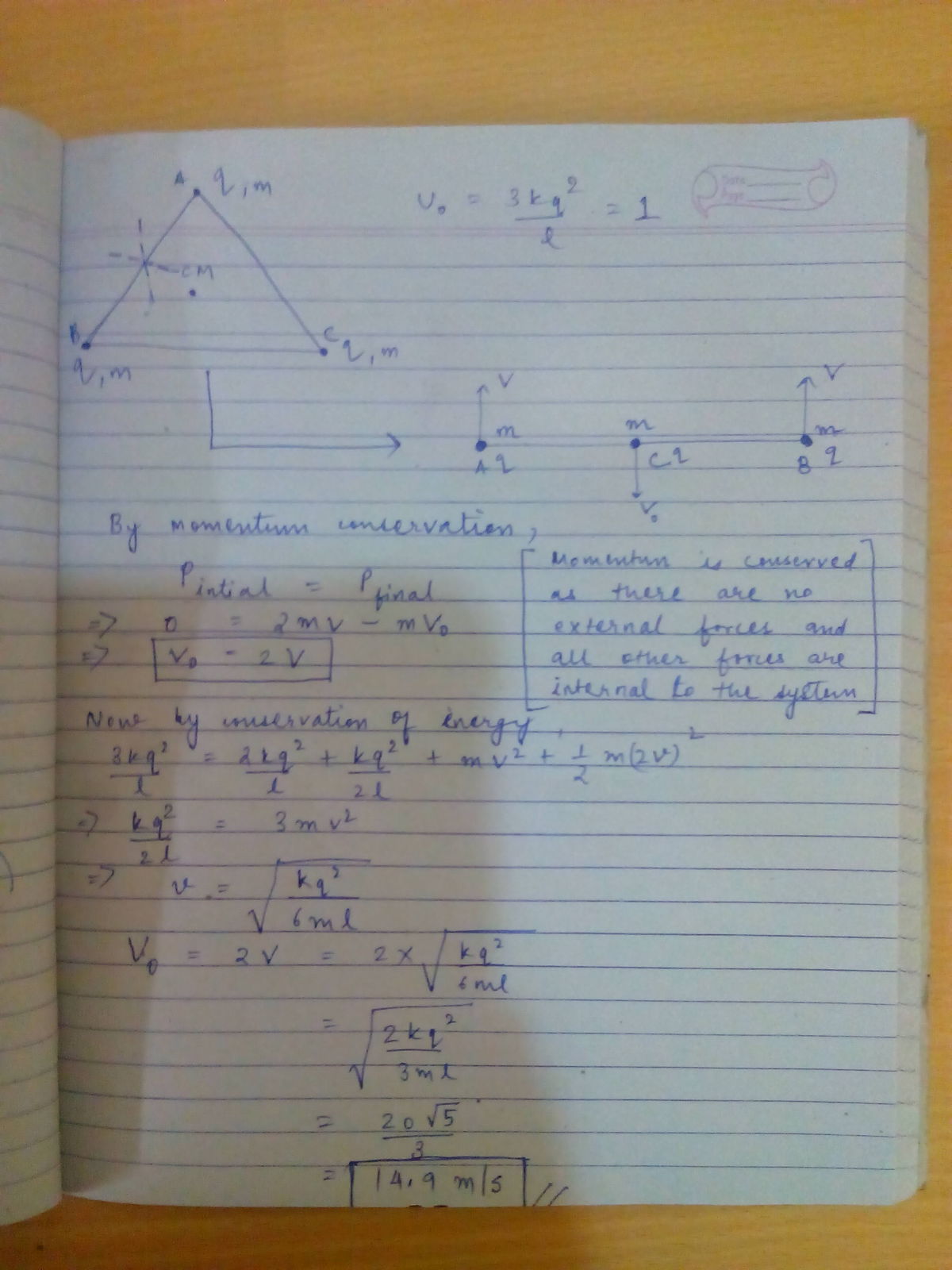Broken String and Speeding Charges
Three identical point charges, each with mass m = 1 g , are connected by strings of the same length l so that they form an equilateral triangle ABC. Initially, the charges are at rest and the electrostatic potential energy of the system is U 0 = 1 J . Suddenly, the string connecting the charges at A and B snaps. What will be the maximum speed in meters per second of the charge located at C.
The answer is 14.9.
This section requires Javascript.
You are seeing this because something didn't load right. We suggest you, (a) try
refreshing the page, (b) enabling javascript if it is disabled on your browser and,
finally, (c)
loading the
non-javascript version of this page
. We're sorry about the hassle.
4 solutions
Momentum is conserved. So, things will happen similarly in the spheres (finally at the edges) between whom the string had been cut and it would be balanced by the sphere in the middle of the two. The velocities are as follows:
 image
image
Let the length of each side of the triangle be a and the charges be q .
Given, 3 k r q 2 = 1
So, by conservation of energy we get:
E n e r g y i n i t i a l = E n e r g y f i n a l ⟹ 3 k r q 2 = 2 5 k r q 2 + 2 1 m ( v 2 + 4 v 2 + v 2 ) ⟹ v 2 = 1 8 1 0 3
So, 2 v = 1 4 . 9
I did by the same way but was wondering whether I should take the changes in the gravitational potential energy as well .... although I didn't do that
How is velocity half nd double
Nice solution.
as the forces after breaking of sting are only internal so com is unchanged from there we get Vc=2Va=2Vc so now by using conservation of energy this vc max can be found where the charges ar alligned in a straight line

It is clear that the velocity of C will be maximum at the state given above.
The velocity of the outer masses will be half of the velocity of the middle mass due to Momentum conservation.
Given that U o = 1 J ,
⇒ 3 l k q 2 = 1
⇒ l k q 2 = 3 1
Conserving Energy between the initial and final state,
P E i = P E f + K E f
⇒ 3 l k q 2 = ( l k q 2 + l k q 2 + 2 l k q 2 ) + ( 2 1 m v 2 + 2 ( 2 1 m ( 2 v ) 2 ) )
⇒ l k q 2 = 2 3 m v 2
⇒ 3 1 = 2 3 × 1 0 − 3 v 2
⇒ v = 9 2 0 0 0 ≈ 1 4 . 9 s e c m